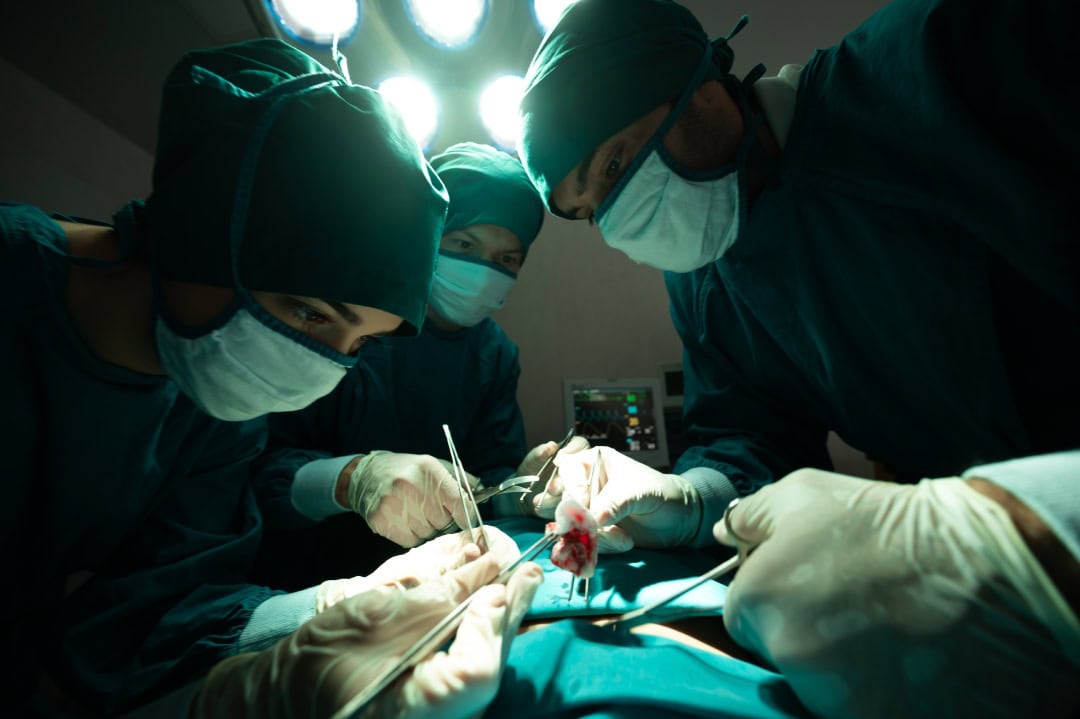For many individuals, breast implants offer a boost in confidence and self-expression. Whether the decision was made years ago or more recently, it’s common to wonder: How long will these implants last? While breast implants are durable, they are not designed to last forever. Over time, your body changes, medical technology evolves, and sometimes implants need to be replaced, whether for medical, aesthetic, or personal reasons. At The Julian Institute of Plastic Surgery, we’re here to help guide you through each phase of your breast implant journey. If you’re starting to ask questions about the longevity of your implants or considering whether it might be time for a breast implants replacement, you’re not alone.
Breast Implants Don’t Last Forever And That’s Okay
It’s a common misconception that breast implants are lifetime devices. While they are made to be durable and long-lasting, the reality is that most patients will require implant replacement or removal at some point.
Here’s what to keep in mind:
- Saline and silicone implants typically last 10 to 20 years on average
- Some patients may go longer without complications
- Others may require earlier revisions depending on their anatomy, lifestyle, or implant type
That doesn’t mean something is wrong. It’s simply part of the natural aging process of both your body and the implant materials. Just like your skin, muscles, and tissues evolve over time, your implants may need attention as well.
Visible Changes In Breast Shape Or Position
One of the most common reasons patients reach out to us about breast implant replacement is cosmetic. Over time, the appearance of your breasts can shift due to aging, weight changes, pregnancy, or gravity. These changes are entirely natural but may affect how you feel in your own skin.
- Sagging or drooping that alters your silhouette
- Implants that sit lower or feel asymmetrical
- A stretched appearance around the nipple or areola
- Rippling or wrinkling of the implant visible through the skin
These signs don’t necessarily mean there’s an emergency, but they can impact how your results look and feel. If your aesthetic goals have changed or you’re no longer happy with the way your implants look, a breast lift or replacement may be a great option.
Pain Or Discomfort That Wasn’t There Before
Breast implants should not cause pain. If you begin to experience discomfort, tightness, or aching in the chest area, it’s worth getting checked out. One possible cause could be capsular contracture, a condition where the scar tissue around the implant hardens and contracts. Other potential causes of pain include:
- Rupture or leakage, especially in silicone implants
- Shifting or rotation of the implant
- Infection or inflammation
- Nerve sensitivity or trauma
Even if the pain is mild, we always recommend a consultation so we can evaluate what’s going on. Sometimes, a minor adjustment is all that’s needed. Other times, replacement or removal can relieve symptoms and restore comfort.
Hardening Or Unnatural Firmness
If your breasts begin to feel unusually firm or look distorted, this may be another sign of capsular contracture. When the scar tissue around the implant becomes too tight, it can squeeze the implant, making it feel hard to the touch. There are varying degrees of capsular contracture, and it doesn’t happen to everyone. Some patients may notice:
- Increased tightness in the chest area
- One breast sitting higher than the other
- A round, overly firm appearance that feels unnatural
This condition is treatable. Depending on the severity, we may recommend implant replacement, a capsulectomy, or a different type of implant altogether.
Changes In Implant Position Or Movement
Over time, implants can shift within the breast pocket, especially if there’s been trauma, weight loss, or changes in tissue support. If you feel like your implants no longer sit where they used to, this could be a sign it’s time for revision. Here’s what to look for:
- One implant sitting higher or lower than the other
- Implants that move too much when lying down
- Displacement toward the armpit or center of the chest
- Changes that affect symmetry or comfort in clothing
We can assess your current implant placement and provide options for repositioning, supporting, or replacing the implants to achieve a more balanced appearance.
Rupture Or Leakage Concerns
While implant rupture is not common, it does happen, and the signs can vary depending on the implant type. Saline ruptures are usually noticeable quickly, as the saline is absorbed by the body and the breast appears deflated. Silicone ruptures, on the other hand, are often referred to as “silent ruptures” because they may not show obvious symptoms. Potential signs of rupture include:
- Sudden change in breast size or shape in saline implants
- Lumps or irregularities in the breast in silicone implants
- Pain or swelling
- Uneven appearance between the two breasts
If a rupture is suspected, imaging such as an MRI or ultrasound can confirm the diagnosis. At that point, removal or replacement of the implant is typically recommended.
You’re Simply Ready For A Change
Not every implant replacement is due to a complication. Sometimes, personal preferences evolve. You may want to:
- Downsize or upsize your implants
- Switch from saline to silicone or vice versa
- Remove implants altogether for a more natural look
- Pair the replacement with a lift or other rejuvenation procedure
Many women come to us after 10 or 15 years with implants and say, “I just want something that fits the next chapter of my life.” That’s a completely valid reason. You deserve to feel like yourself, whether that means enhancing, refining, or simplifying your results.
How Often Should You Monitor Your Implants
Routine monitoring is one of the best ways to stay ahead of implant-related issues. Even if you feel great and have no noticeable changes, periodic evaluations ensure everything is functioning as it should. Recommendations include:
- Annual exams with your plastic surgeon
- MRI scans for silicone implants every 5 to 6 years, as recommended by the FDA
- Self-checks to monitor for symmetry, shape, or changes in feel
These visits are quick and non-invasive, and they can give you peace of mind. Plus, if anything does need to be addressed, we can offer timely and personalized solutions.
What To Expect From The Breast Implant Replacement Process
Many patients are surprised to learn that implant replacement is often a smoother and faster recovery than the original surgery. Since the pocket is already created, the procedure can be more straightforward.
- Consultation: We’ll discuss your goals, evaluate your current implants, and explore options for replacement or removal.
- Imaging and Preparation: If needed, imaging tests can help determine if there’s rupture or capsular contracture. We’ll also review your health history and create a tailored surgical plan.
- Surgery: During the procedure, we remove the old implants, address any scar tissue, and insert the new implants or perform a lift depending on your plan.
- Recovery: Recovery time is typically shorter than the original augmentation. Most patients return to light activity within a week and full activity within four to six weeks.
We take a personalized approach with every patient, ensuring your outcome reflects your goals and lifestyle.
Why Experience Matters With Revisions
Breast Implant replacement isn’t a one-size-fits-all surgery. It requires a deep understanding of tissue changes, implant technology, and surgical artistry. At The Julian Institute of Plastic Surgery, Dr. Marc Polecritti and Dr. Derek Polecritti are both Board-Certified Plastic and Reconstructive Surgeons with extensive experience in complex breast surgeries.
We approach each replacement with the same care and attention as your first surgery, ensuring your results are not only safe but aesthetically refined. We also take the time to explain your options thoroughly, whether you’re looking for a subtle upgrade, a full refresh, or a natural transition.
Your Confidence Should Never Have An Expiration Date
Find Out Today if Your Breast Implants Need to be Replaced
Whether your implants are reaching the 10-year mark or you’re simply curious about your options, we’re here to help you make empowered, informed decisions. The goal is not just to replace your implants. It’s to make sure you feel confident in your body and supported by your surgeon every step of the way.
If you think it might be time to replace your implants, or if you simply have questions, schedule a consultation with The Julian Institute of Plastic Surgery. We’ll provide an honest assessment, explore your goals, and help you decide what’s best for your body today and in the future.






